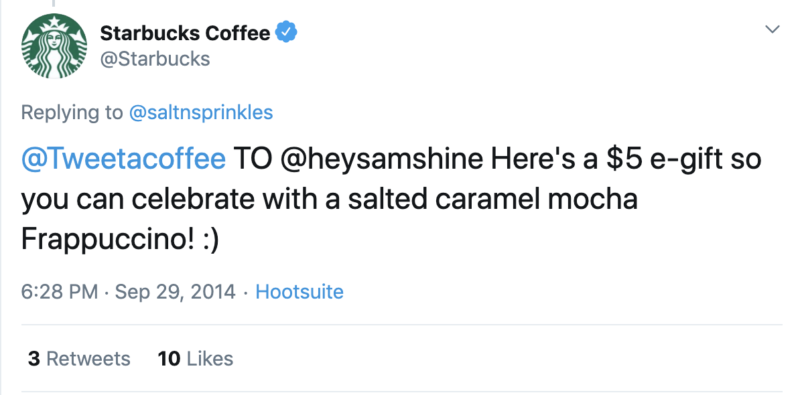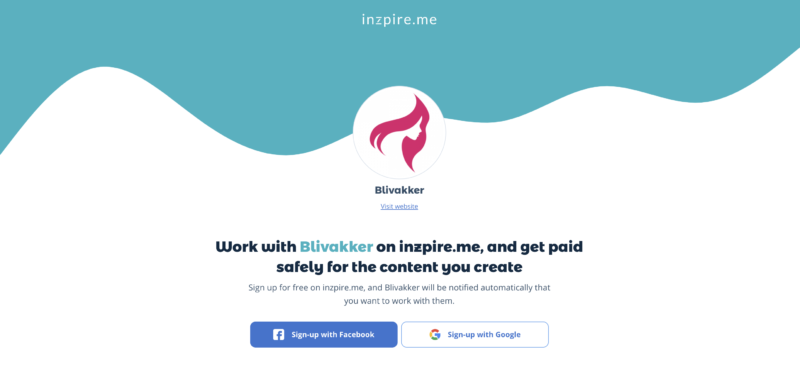Imagine this: hundreds of micro-influencers suddenly start promoting your brand for free.
You haven’t spent a penny on influencer marketing campaigns. But your social media pages are flooded with brand mentions and glowing reviews of your products and services, which sends your sales through the roof.
That is the power of advocacy marketing.
Advocacy marketing gives you the ability to influence the way your customers talk about your brand to others. It’s simple, affordable, effective – and absolutely essential for any marketing strategy in 2020.
We’re going to show you how to leverage the power of advocacy marketing for your business. We’ll be explaining exactly what advocacy marketing is and how to do it. Stick around until the end to look through some inspirational examples from brands that nailed it.
Let’s get started!
Table of Contents
What’s advocacy marketing?
In a nutshell, advocacy marketing is a form of marketing that turns your most enthusiastic customers into brand advocates. You achieve this by encouraging them to share their positive experiences with others through a carefully considered marketing strategy.
The goal is to amplify the voices of the customers that love your brand the most in order to bring in more business. You can think of it kind of like word-of-mouth marketing.
Your customers act as your brand influencers, social team, and content creators who do the work to spread the good word about your business.
Why is advocacy marketing so effective?
Cost-effective, high-yielding, and trust-rich – advocacy marketing is seen as a “holy grail” by many marketers.
With the rise of social media, word-of-mouth recommendations travel further these days than before. In 2020, the average social media user is connected to over 400 friends. That means that every advocate who shares a positive experience with your brand has the potential to reach 400 others.
Let’s crunch those numbers for a second:
- 10 advocates = 4,000 reach
- 1,000 advocates = 400,000 reach
- 10,000 advocates = 4,000,000 reach
And here’s the best part: your advocates’ messages are more effective than your paid ads.
Why? Because consumers these days are skeptical. They don’t trust ads from faceless corporations, but they do trust reviews from the people they care about.
In fact, 92% of consumers say they trust recommendations from their friends and family above all other types of advertising. 76% of surveyed individuals say they trust content shared by people more than content shared by brands.
And the benefits don’t stop there. Here are a few more reasons why investing in advocacy marketing should be a no brainer:
- It’s cost-effective. Brands see an average ROI of 650% per dollar spent on advocacy marketing.
- It’s a strong acquisition play. Customers referred by their friends have a 37% better retention rate.
- Brand advocates are valuable assets. They don’t just help promote your brand, they also spend more and are well-versed on your products. This makes them an ideal source of information.
- It boosts brand recognition. It’s not all just about sales. Your brand advocates also help to start natural, organic conversations around your brand, which boosts recognition and awareness.
Advocacy marketing strategy
Alright, let’s talk strategy. We’ve identified 5 basic principles that every good advocacy marketing strategy is built around. Let’s dive into them!
Sell a great product or service
Rule number one in the advocacy marketing handbook is to make sure your customers have a reason to shout about your products or services in the first place.
It doesn’t matter how much effort you put into marketing or how great your customer experience is. If you don’t have a top-notch product or service, they’re not going to become brand advocates.
On the other hand, a fantastic product or service can make up for poor marketing and an otherwise bad customer experience. If what your selling offers incredible value, your customers are going to tell their friends about it anyway.
That’s why you need to focus on developing your product or service before you do anything else.
Provide a memorable brand experience
You need to go the extra mile in order to turn customers into brand advocates. That means every interaction or encounter they have with your brand should be excellent. The goal is to create memorable brand experiences that they can’t help but want to tell their friends about.
That means your customer service needs to be on point. Your product packaging should be intuitive. Your website should be well-thought-out and easy to navigate. Every piece of content you share with your social followers should be compelling and engaging.
This all helps create unforgettable experiences and positive stories for your customers to share.
Give excellent customer service
When your customers feel like they’ve been treated well by your brand, they’re motivated to do the same. That’s why giving great customer service is so important.
By creating a customer-first approach, you’ll build customer loyalty. There are many ways to work on your customer service, but here are a few ideas to get you started:
- Always respond to mentions, questions, and comments on social media promptly.
- Stick to your promises as a brand and make sure you deliver your products on time.
- Train your representatives on how to deliver great customer service consistently.
- Make sure customer aftercare is not an afterthought.
- Offer a generous return and exchange policy.
- Keep your call queues down, so you don’t keep customers waiting for your sales or support lines.
This helps your customers feel like they can trust and rely on your brand. When they feel they’ve been taken care of well, they’re more likely to advocate for it.
Make it easy to and encourage customers to advocate
The steps above will help ensure your customers have positive experiences with your brand. The next step is to encourage them to share those experiences with others.
Some customers will advocate for your brand because they’re thrilled with their experience. But most of them will still require a little push. As such, there are two steps you need to take:
- Make it easy for customers to advocate for your brand
- Incentivize customers to advocate for your brand
Step one might involve adding social sharing buttons to your webpages, providing pre-populated Facebook messages, creating a branded hashtag for your customers to use when sharing reviews, or anything similar that makes it less time consuming for your customers to advocate.
Step two is to give customers more reason to advocate for your business. There are plenty of methods to incentivize them, but here are a few ideas you can try:
- Set up an affiliate marketing program, such as offering a discount when they refer a friend
- Create a rewards or loyalty program for your customers
- Launch an Instagram contest or giveaway to encourage customers to share pictures with your products
You get the idea!
Look for advocates
The best advocates for your brand are loyal customers that are very satisfied with your offerings. But you can’t mobilize them if you don’t know who they are.
That’s why you also need to take the time to find them. Once you’ve identified those happy customers, you’ll be able to better personalize your marketing messages and reach out to them directly when you launch your advocacy marketing campaign.
Here are a few ideas on how you can do this:
- Assign a member of your social team to look up who’s engaging with your brand. Reach out to large profiles for a potential brand ambassadorship
- Use software solutions, such as social listening tools, to “listen in” on your customer conversations and track who’s already advocating for your brand online.
- Launch a user-generated content (UGC) campaign to find engagers.
- Use NPS surveys to ask your customers to rate how likely they are to recommend your brand to others. The customers who rate themselves “very likely” are your brand advocates.
Examples of advocacy marketing
Before we wrap up, let’s take a look at some awesome examples of advocacy marketing in action. The brands below really nailed it with creative advocacy campaigns.
Airbnb
In 2016, Airbnb topped the YouGov brand advocacy rankings, which looks at the number of people recommending brands to their family and friends. Airbnb was shown to have more brand advocates than any other brand – so how did they do it?
Well, it comes down to their successful refer-a-friend program. Airbnb users can share an invite link with their friends to invite them to the platform. When they sign up and complete a booking, the referrer gets $20 credit and their friend gets $40 credit. This amount can vary depending on country or time.
Naturally, $20 off your next booking is a huge incentive for users to advocate. Plus, having $20 credit in their account encourages them to book again, which ensures repeat business for Airbnb. It’s a win-win.
Their growth team says that word-of-mouth referrals from brand advocates were especially important for Airbnb because of their business model. When people are going to stay in someone’s apartment, they’re going to have questions about safety.
The team felt that it was important that someone they knew and trusted, who was already an Airbnb user, was there to answer those questions and vouch for the platform. This made the refer-a-friend program a meteoric success.
Apple
Apple’s #ShotoniPhone campaign is a shining example of how advocacy marketing works hand-in-hand with UGC.
Apple focused their campaign around UGC by asking users to share photos they took with their iPhones on social media with the campaign’s hashtag. The incentive was there too: Apple promised to use the photos they liked the most on their billboard ads.
Thousands of photos were posted globally as customers scrambled to become the next Apple star.
Eventually, photos from 77 people were chosen, but the real winner was Apple. They didn’t just generate a massive buzz around their products, they also had their customers make their ad materials for them.
Starbucks
Let’s talk about Starbucks’ super-successful Tweet-A-Coffee campaign. The idea was gloriously simple: let customers “gift” their friends a $5 Starbucks gift card by tweeting the handle @tweetacoffee alongside their friend’s handle.
To gain some initial momentum, they also promised the first 100,000 people another $5 gift card for themselves.
As you’d expect, hundreds of thousands of people did Starbucks social marketing for them on the promise of a free coffee. Besides generating huge revenue for Starbucks’ (around $180,000 in sales), it also helped them identify their most loyal advocates and reach new potential customers.
Blivakker
Finally, Blivakker uses a unique approach to recruit brand advocates at the optimal time.
To ensure their advocates are true fans of their products, Blivakker uses inzpire.me’s influencer marketing platform to share a unique referral link on their social media, webpage, and purchase confirmation pages. When their customers make a purchase or visits their site and social media, they have an option to click on the link if they’re interested in becoming advocates.
Their customers get redirected to a branded landing page encouraging them to sign up. Once they do, they’ll pop up in Blivakker’s account. This makes it simple for Blivakker to identify advocates who are customers that want to help spread the word about them.
Since February to June 2020, Blivakker has had over 330 loyal customers come in through the referral link!
Final thoughts on advocacy marketing
As you can see, advocacy marketing can be incredibly powerful if you get it right – and getting it right doesn’t have to be hard. Just focus on pleasing your customers, give them a nudge in the right direction, and they’ll do the rest.














